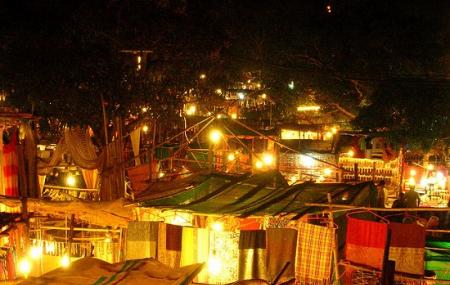
Arpora Night Market in Goa is an exceptional shopping experience, located in the small town of Arpora, a few kilometers away from the popular beaches of Anjuna and Baga. It's a bustling market that offers a vibrant and colorful atmosphere, with live music, food stalls, and a range of products, including clothing, accessories, and souvenirs. Covering an area of about 2 acres, the market has over 500 stalls offering a vast range of products, including unique items that are often handmade and locally sourced. Visitors can find a variety of products made from traditional materials like cotton, silk, and leather, such as jewelry, bags, footwear, paintings, sculptures, pottery, and home decor items.
One of the most popular attractions of the market is the food stalls that offer local Goan dishes like fish curry and vindaloo, and international delicacies like sushi and pizza, as well as several bars and cafes that serve cocktails, beers, and mocktails. The market also features live music performances, including rock, pop, and fusion, which creates a lively and energetic environment.
Arpora Night Market is a melting pot of cultures and traditions that attracts both locals and tourists alike. Visitors can interact with locals, learn more about the culture and history of Goa, and have a unique and enriching experience. Although the market is only open on Saturdays, it attracts around 10,000 visitors each week during peak season, making it a hub of activity where vendors and customers haggle over prices and bargain for the best deals.
In recent years, Arpora Night Market has gained popularity among digital nomads and entrepreneurs, who use the market as a platform to showcase their products and services. The market has also become an important source of income for local vendors and artisans, providing them with a platform to showcase their skills and talents.
In conclusion, Arpora Night Market is a unique and vibrant market that offers a range of products, food, and entertainment. It's a must-visit destination for anyone looking to explore the culture and heritage of Goa and experience its vibrant nightlife.








